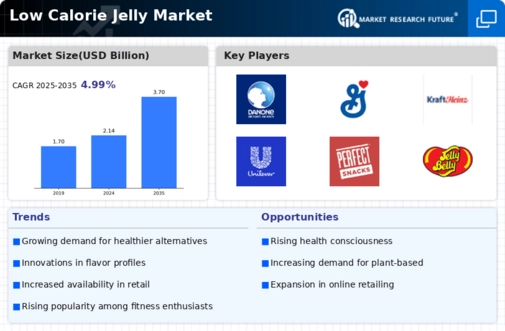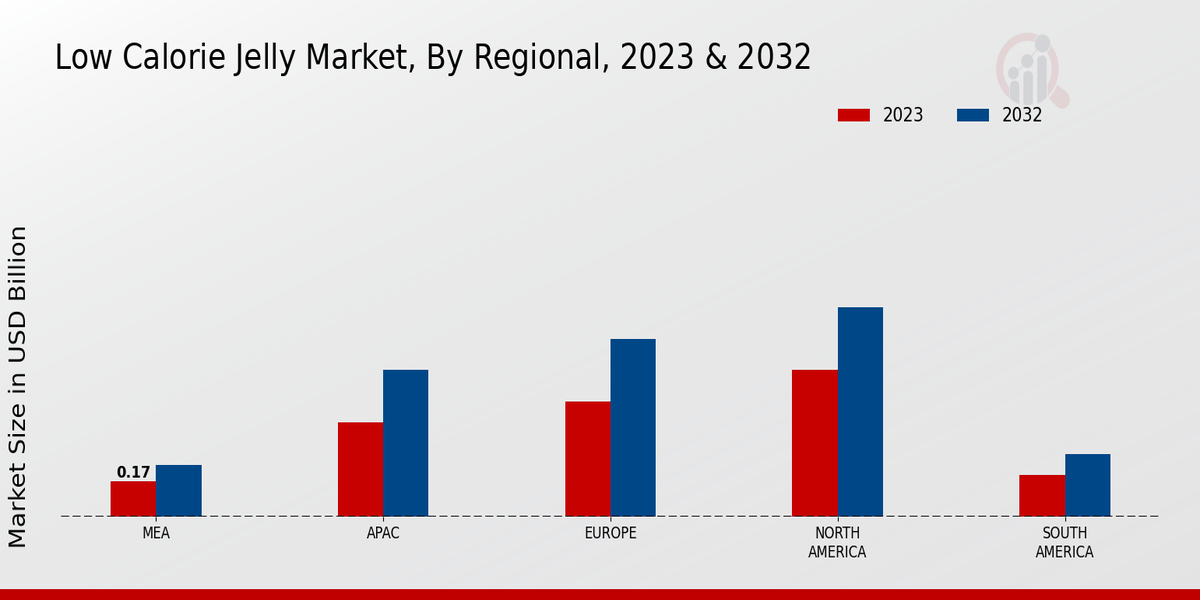Health Consciousness
The rising awareness of health and wellness among consumers appears to be a primary driver for the Global Low Calorie Jelly Market Industry. As individuals increasingly prioritize healthier dietary choices, the demand for low-calorie alternatives has surged. This trend is particularly evident in urban areas where lifestyle diseases are prevalent. For instance, the market is projected to reach 2.14 USD Billion in 2024, reflecting a growing preference for products that align with health goals. Consumers are actively seeking low-calorie options that do not compromise on taste, thereby propelling the growth of this segment.
Rising Popularity of Diet Trends
The rising popularity of various diet trends, such as keto and low-carb diets, seems to significantly influence the Global Low Calorie Jelly Market Industry. These dietary movements emphasize the reduction of sugar and caloric intake, leading consumers to seek alternatives that align with their dietary preferences. Low calorie jellies, often marketed as suitable for these diets, are gaining traction among health enthusiasts. This trend is expected to sustain the market's growth trajectory, as more individuals adopt these diets and look for compliant snack options. The industry's adaptability to these trends may further enhance its market position.
Innovation in Product Formulation
Innovation in product formulation seems to play a crucial role in the expansion of the Global Low Calorie Jelly Market Industry. Manufacturers are increasingly experimenting with natural sweeteners and alternative ingredients to enhance flavor while maintaining low caloric content. This innovation not only attracts health-conscious consumers but also caters to those with dietary restrictions. For example, the introduction of plant-based jellies and those fortified with vitamins and minerals has broadened the market appeal. As a result, the industry is likely to witness a compound annual growth rate of 5.11% from 2025 to 2035, driven by continuous product development.
Growing Demand for Convenient Snacks
The growing demand for convenient snacks is another significant driver influencing the Global Low Calorie Jelly Market Industry. With the fast-paced lifestyle of modern consumers, there is an increasing preference for on-the-go snack options that are both healthy and satisfying. Low calorie jellies, often packaged in single-serving formats, cater to this need effectively. This trend is particularly pronounced among busy professionals and students who seek quick yet nutritious snack alternatives. The market's projected growth to 3.7 USD Billion by 2035 underscores the potential of low calorie jellies to fulfill this demand for convenience without sacrificing health.
Increased Availability in Retail Channels
Increased availability of low calorie jelly products across various retail channels appears to be a driving force in the Global Low Calorie Jelly Market Industry. Supermarkets, health food stores, and online platforms are expanding their offerings of low-calorie options, making these products more accessible to consumers. This enhanced distribution network not only facilitates consumer choice but also encourages trial and adoption of low calorie jellies. As retailers recognize the growing consumer interest in healthier options, they are likely to stock a wider variety of products, further stimulating market growth and contributing to the industry's overall expansion.





















Leave a Comment